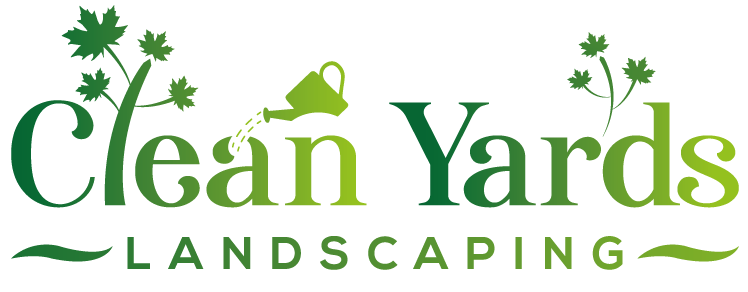Manotick Fall Grading: Prevent Costly Spring Flooding Now
Quick Summary:
- Poor yard grading (slope towards the house) is a major cause of spring flooding around foundations in Manotick and Ottawa.
- Fall is the ideal time for grading due to better soil conditions and reduced stress on plants.
- Correct grading involves creating a gentle slope (approx. 6 inches over 10 feet) away from the foundation.
- Proper grading prevents costly water damage, basement leaks, and foundation issues.
- Professional grading ensures accuracy and efficiency, especially for significant slope correction.
Is your property ready for the spring melt? Don't wait for puddles to appear! Ensure proper drainage now. Request a free grading assessment today!
Introduction: Dodging the Spring Swamp - Why Manotick Needs Fall Grading
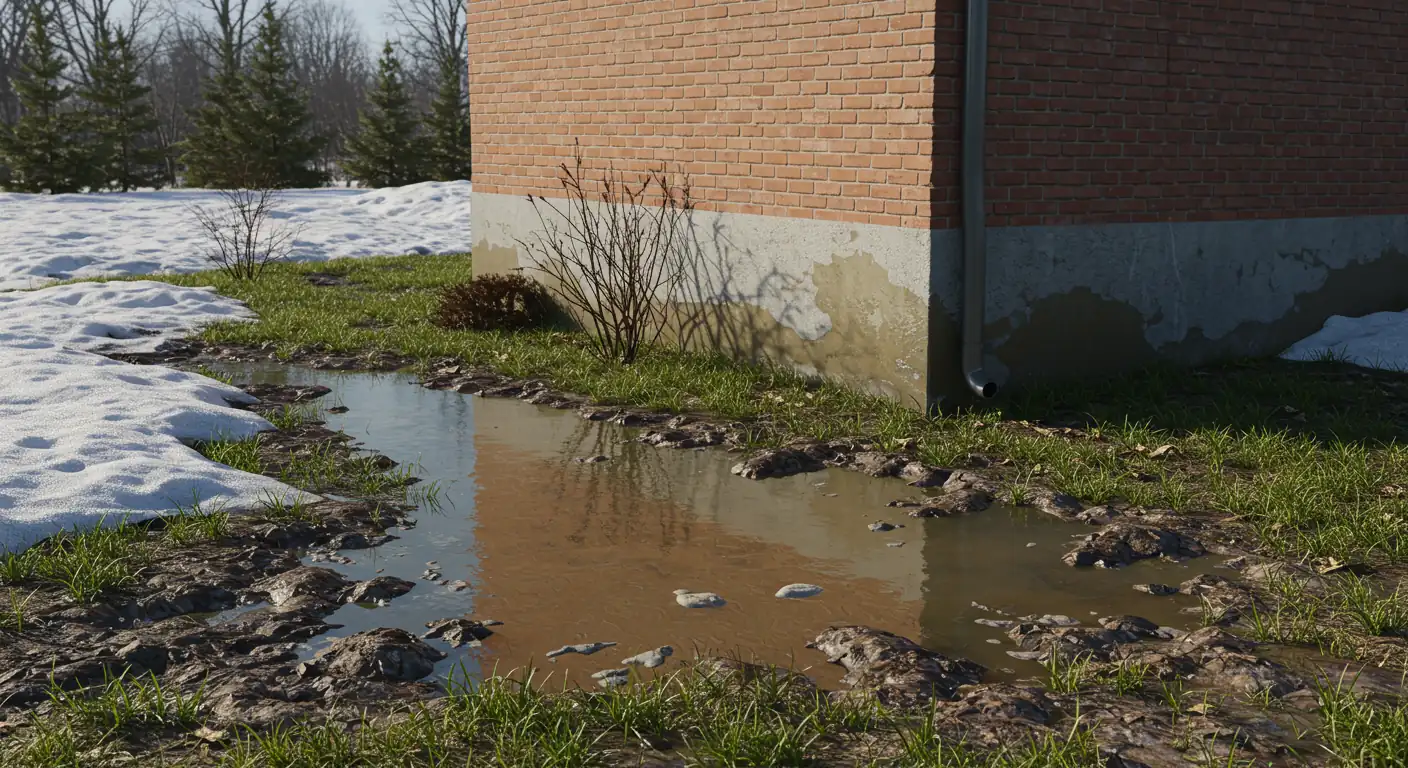
Ah, spring in Manotick! We all love seeing the tulips pop up and enjoying the sunshine along the Rideau River. But let's be honest, spring also brings the great melt, and sometimes, our yards turn into mini-swamps. Nobody wants to trade their garden boots for hip waders just to get the mail! That unwelcome water pooling around your foundation isn't just messy; it's a recipe for costly headaches like leaks and structural damage.
Instead of crossing your fingers and hoping for the best each spring, there’s a smarter way: fall grading. Think of it as giving your yard a gentle reshape before winter arrives. By ensuring the soil around your home slopes away correctly, you’re directing melting snow and spring rain away from your foundation, not towards it. This isn't just a Manotick issue, either – homeowners from Barrhaven to Greely know the soggy struggles poor drainage can bring across the wider Ottawa region. Issues like these are common reasons people seek Ottawa property cleanup services.
Getting your landscape grading done in the fall, after the main growing season but before the ground freezes solid, is the perfect timing. It sets you up for a much drier, less stressful spring thaw, protecting your home and peace of mind. Let’s face it, wouldn't you rather spend next spring planning your dream garden than mopping your basement?
Spring Melt Mayhem: Understanding Ottawa's Unique Flooding Risks
Okay, Ottawa neighbours, let's talk spring! We all breathe a sigh of relief when the mountains of snow finally start shrinking. But sometimes, that great melt transforms our lovely region into something a bit... squishier. This "Spring Melt Mayhem" isn't just random sogginess; several factors make areas from Manotick and Osgoode right through to Nepean and Richmond uniquely prone to water woes. Understanding why helps us prepare.
First up: Our classic Canadian climate. We often get heavy snowfall throughout the winter. Then, spring arrives, sometimes quite suddenly, with rapidly warming temperatures. When all that snow melts quickly, especially if it’s combined with those inevitable heavy spring rains, the sheer volume of water can overwhelm the landscape. There’s simply too much water arriving too fast for the ground to handle gracefully. Check local resources like the Rideau Valley Conservation Authority (RVCA) for spring condition reports.
Second, let's get down to earth – literally. Much of the Ottawa Valley, including places like Greely and Metcalfe, is known for its heavy clay soil. While great for some types of gardening, clay acts a bit like plastic wrap. It doesn't absorb water quickly, unlike sandier soils. When meltwater hits clay, it tends to pool on the surface or run off horizontally instead of soaking downwards. This means water hangs around longer, saturating your lawn and potentially finding its way towards your foundation.
Third, we live amongst beautiful waterways! The Rideau River, the Ottawa River, and countless smaller creeks are fantastic features of our region. However, during the spring thaw, river and creek levels rise significantly. This raises the local water table (the level of groundwater beneath the surface) and, in some cases, can lead to overland flooding, particularly in low-lying areas near these water bodies. The City of Ottawa website offers resources on flood preparedness.
So, why sweat a little extra water? Because "a little" water pooling around your home due to poor drainage can lead to some seriously big, expensive problems:
- Foundation Cracks: Persistent water pressure against foundation walls can cause cracks over time.
- Basement Leaks & Flooding: Water exploits those cracks, leading to damp basements, ruined belongings, and costly cleanup.
- Mold and Mildew: Dampness is a breeding ground for mold, which can impact indoor air quality and health. Ottawa Public Health has information on dealing with mold.
- Damaged Landscaping: Waterlogged soil drowns expensive plants and shrubs, erodes topsoil from garden beds, and can turn your lawn into a mud pit.
- Compromised Hardscaping: Patios, walkways, and driveways can shift, heave, or crack if the ground beneath is constantly saturated and unstable.
Thinking ahead is key. Proper yard preparation before winter is essential, as good fall practices can significantly reduce spring water issues. Following tips like those in a Manotick Fall Cleanup & Winter Lawn Prep guide helps ensure water can flow away from your home. Even the way your garden is laid out matters; thoughtful Manotick Garden Design for Your Dream Backyard can incorporate gentle slopes and features that naturally direct water. It's quite the shift from needing careful Manotick Irrigation Checks to Save Water in Summer just a few months later! Ultimately, ensuring your property is ready involves a complete approach, often detailed in resources like a Manotick Fall Cleanup & Winter Prep Guide. If assessing your property's drainage seems daunting, considering professional Landscaping & Yard Care Services can provide peace of mind and protect your home from the worst of the spring melt. Check out our Google reviews to see what clients say.
Grading 101: Shaping Your Land to Send Water Packing
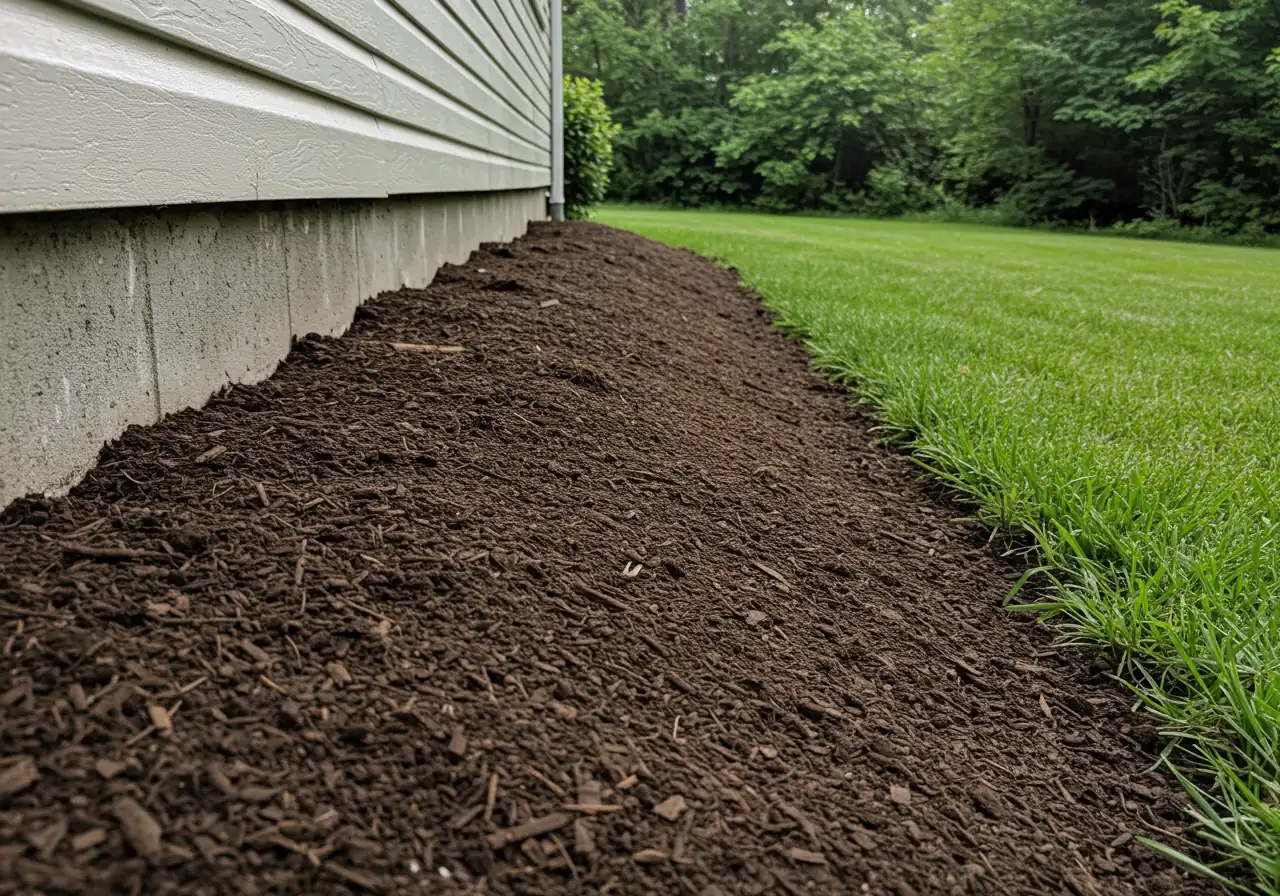
Ever feel like your yard is trying to become an unwanted swimming pool every time it rains hard or the snow melts? If water hangs around your foundation like an unwelcome houseguest, the culprit might be your property's grading. Don't worry, it’s not as complicated as it sounds! Think of grading as gently shaping your land, creating subtle slopes that tell water exactly where to go – and that direction should always be away from your house.
So, what is landscape grading? Simply put, it’s the level or slope of your soil surface. When we talk about grading for drainage, we usually mean the slope of the ground immediately around your home's foundation. The goal is to create what's called a positive grade. Imagine your house is sitting on the crest of a very small, gentle hill. Rain or melting snow that lands near the foundation naturally flows downhill, away from the walls. That's positive grade – and it's your foundation's best friend!
The opposite, negative grade, is when the ground slopes towards your house. This acts like a funnel, directing water right to your foundation walls. Uh-oh. That’s how you end up with soggy basements, cracked foundations, and a constant battle against moisture, a common headache for homeowners from Manotick to Greely.
How much slope do you need? A good rule of thumb is to have the ground drop about 6 inches over the first 10 feet away from your foundation. It doesn't need to look like a ski hill! Often, a proper grade is barely noticeable, but it makes a huge difference in guiding water safely away.
Ignoring poor grading is like ignoring a leaky faucet – it only gets worse. The consequences include:
- Water seeping into your basement or crawl space.
- Increased pressure on foundation walls, potentially leading to cracks.
- Damage to landscaping, drowning plants and eroding garden beds.
- Creating breeding grounds for mold and pests near your home.
- Turning your lawn into a muddy mess.
Fixing grading issues often involves carefully adding or removing soil to create that crucial positive slope. Sometimes, this work reveals other areas needing attention, perhaps tidying up water-damaged sections similar to work done during a Manotick garden clean up. If reshaping your yard sounds like heavy lifting, don't worry – achieving the perfect grade is one of the key professional landscaping services we offer. Once corrected, remember that soil can settle over time, so keeping an eye on your grade might become part of your regular garden maintenance routine.
Wondering if your grade is making the grade? We can assess your Ottawa property and discuss the best solutions. Feel free to reach out, and you can even get detailed feedback on your grading estimate to understand the specifics. Once a project is planned, our clients find it easy to manage your projects through our customer portal. Getting the grading right is a fundamental step towards a drier, healthier home and yard!
The Autumn Advantage: Why Fall is Prime Time for Grading in the Capital Region
Okay, let's talk timing! While spring might seem like the obvious time for landscaping transformations, when it comes to grading your property in the Ottawa region, fall often wears the crown. Think of it as the "Autumn Advantage" – getting your yard shaped up before winter hits can save you a whole lot of soggy springtime stress.
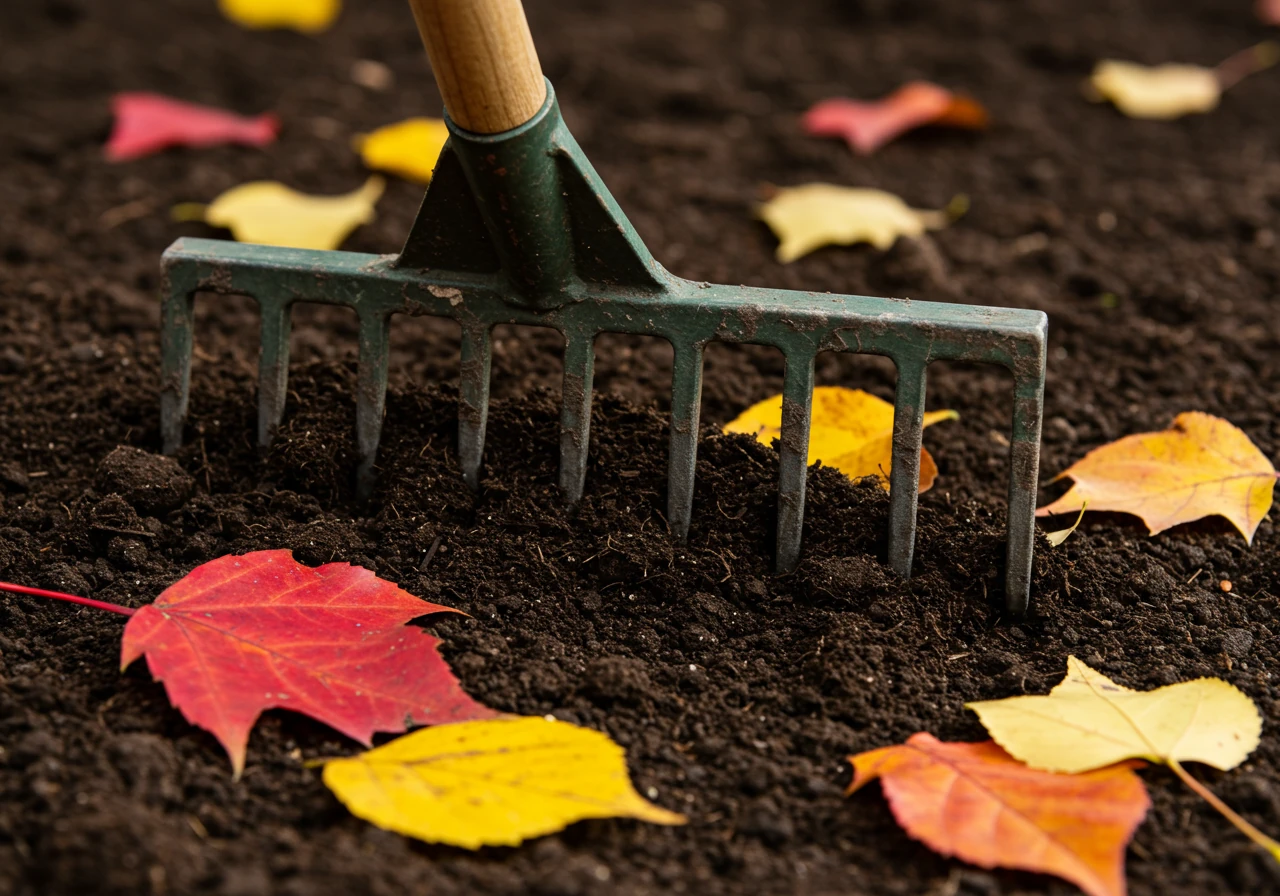
So, why is autumn prime time for adjusting the soil slope around your home, especially in areas like Manotick or out towards Vernon and Winchester?
- Friendlier Soil Conditions: Remember that spring melt mayhem we talked about? Spring soil can be, well, mushy. Trying to move heavy, wet clay is messy work, and operating equipment can compact the ground, potentially making drainage worse! Fall soil, on the other hand, is typically drier and more stable after the summer heat. This makes it much easier to work with, allowing for more precise grading and less disruption to your existing lawn and garden beds. It’s like trying to sculpt firm clay versus sloppy pudding – guess which one gives better results?
- Happier Plants: Most plants, including your lawn, are heading into dormancy in the fall. The cooler temperatures mean less stress on anything that gets disturbed during the grading process. Digging and reshaping in the heat of summer can shock plants, but in fall, they’re already winding down for the season. This gives lawns and any affected perennial roots time to settle in before the ground freezes, ready for a healthy start next spring. It’s much gentler than upheaving things just as they’re trying to grow vigorously.
- Get Ahead of the Melt: This is the big one! Grading in the fall means your property is already prepared to handle melting snow and heavy spring rains. That positive slope away from your foundation will be ready and waiting to channel water away from Day One of the thaw. No more holding your breath and hoping the basement stays dry! It’s proactive protection against potential water damage. Think of it as giving your home a good raincoat before the storm season hits. This work often complements end-of-season tasks; many homeowners schedule grading alongside an Ottawa garden clean up service to get everything shipshape for winter.
- Smoother Scheduling (Sometimes!): While good landscapers are always busy, the spring rush can be particularly intense. Scheduling major work like grading *might* be slightly easier in the fall compared to the peak spring frenzy. It's worth planning ahead! You can see examples of beautifully graded properties completed in various seasons in our project gallery.
Benefits of Fall Grading
- ✅ Drier, more stable soil - easier to work, less messy.
- ✅ Less stress on dormant lawns and plants.
- ✅ Proactive: Drainage is ready *before* spring melt.
- ✅ Often better integration with fall cleanup tasks.
- ✅ Potentially easier scheduling than peak spring season.
Challenges of Spring Grading
- ❌ Wet, muddy soil - difficult to work, potential compaction.
- ❌ Higher stress on actively growing plants.
- ❌ Reactive: Trying to fix problems *after* snow melts.
- ❌ Peak season rush for landscapers.
- ❌ Can delay other spring planting or lawn care activities.
Ready to give your property the Autumn Advantage? Taking action now means a drier, less stressful spring. Why not book an estimate to discuss your specific needs? We serve neighbourhoods across the Capital Region, offering services like specialized Metcalf yard cleanup service and comprehensive grading solutions. Understanding the process and costs is easy too; we're happy to provide detailed feedback on your grading estimate so you know exactly what to expect. Don't wait for the spring puddles – let's get your grading sorted this fall!
DIY Disaster or Pro Perfection? Tackling Your Grading Project
Alright, so you've spotted some soggy spots in your Manotick yard, or maybe that slope towards your Barrhaven foundation is looking a bit suspicious. You know grading is the answer, but the big question looms: Can you tackle this yourself, or is it time to call in the pros? It’s the classic homeowner dilemma – save some cash with DIY, or invest in guaranteed results? Let's break it down.
Rolling Up Your Sleeves: The DIY Approach
There's definite satisfaction in transforming your own landscape. If you’re dealing with a very small, localized low spot, and you enjoy physical work, DIY grading might be possible. You'll need the right tools – a sturdy shovel, wheelbarrow, landscape rake, tamper, and definitely a level (a laser level is even better) to ensure you're actually creating that positive slope away from your house.
However, let's be honest, grading isn't just about slinging soil around.
- The Sweat Factor: It's hard work! Moving enough soil to correct even a moderate slope involves serious digging and hauling.
- Getting it Right: The biggest risk? Getting the slope wrong. Accidentally creating negative drainage is worse than doing nothing at all. Precision is key, and judging slope by eye is notoriously tricky.
- Hidden Issues: What if you dig down and find unexpected roots, rocks, or buried utility lines? A simple job can get complicated fast.
- The Finish: After grading, the area often needs finishing touches. Achieving proper soil preparation is key if you plan to reseed or lay new turf like with our sod installation service. Will you be ready to handle that next step?
Calling the Cavalry: The Professional Advantage
Hiring a professional grading service takes the guesswork and backache out of the equation. Here’s why many Ottawa homeowners choose this route:
- Expertise & Equipment: Pros understand soil types, drainage patterns, and how to calculate slopes accurately. They also have access to specialized equipment (like skid steers for larger jobs) that makes the work far more efficient.
- Efficiency: What might take you several weekends of hard labour, a pro crew can often complete much faster, minimizing disruption to your yard and life. You can see examples of professional grading results that were achieved efficiently.
- Guaranteed Results: Reputable companies stand behind their work. They ensure the grade is correct and often offer warranties. They're also insured, protecting you from liability if anything unexpected happens. Getting to know the team doing the work can build confidence; you can learn more about our team's experience and commitment.
- Comprehensive Service: Professionals handle the entire process, from assessment to final cleanup. They ensure the site is left tidy, unlike some DIY projects that might resemble the aftermath requiring a thorough garden clean-up. They can also seamlessly transition the graded area into the next phase, like ensuring the ground is ready for new sod installation.
The Verdict?
For minor touch-ups where you feel confident about measuring slope, DIY *could* work. But for anything involving significant reshaping, correcting slopes near your foundation, or larger areas, the professional approach usually offers better results, greater peace of mind, and ultimately protects your home investment. Consider making a simple comparison table listing factors like cost, time, tools, expertise, and risk to help weigh your specific situation. Getting the grade right is crucial – choose the path that ensures perfection, not a potential disaster!
| Factor | DIY Grading | Professional Grading |
|---|---|---|
| Cost | Lower upfront (tool rental/purchase, materials) | Higher upfront (labour, expertise, equipment) |
| Time | Significant personal time commitment | Much faster completion |
| Tools/Equipment | Basic hand tools, potentially rental equipment | Professional-grade tools & machinery |
| Expertise | Requires research, precision difficult | Experienced, accurate slope calculation |
| Risk | Risk of incorrect slope, damage, injury | Lower risk, insured, often guaranteed |
| Best For | Very minor, simple low spots | Foundation grading, significant slopes, larger areas |
Visualizing Grading Impact
Potential Issues Caused by Poor Grading
Illustrative representation of risks associated with improper yard slope.
Beyond the Slope: Smart & Sustainable Drainage Solutions
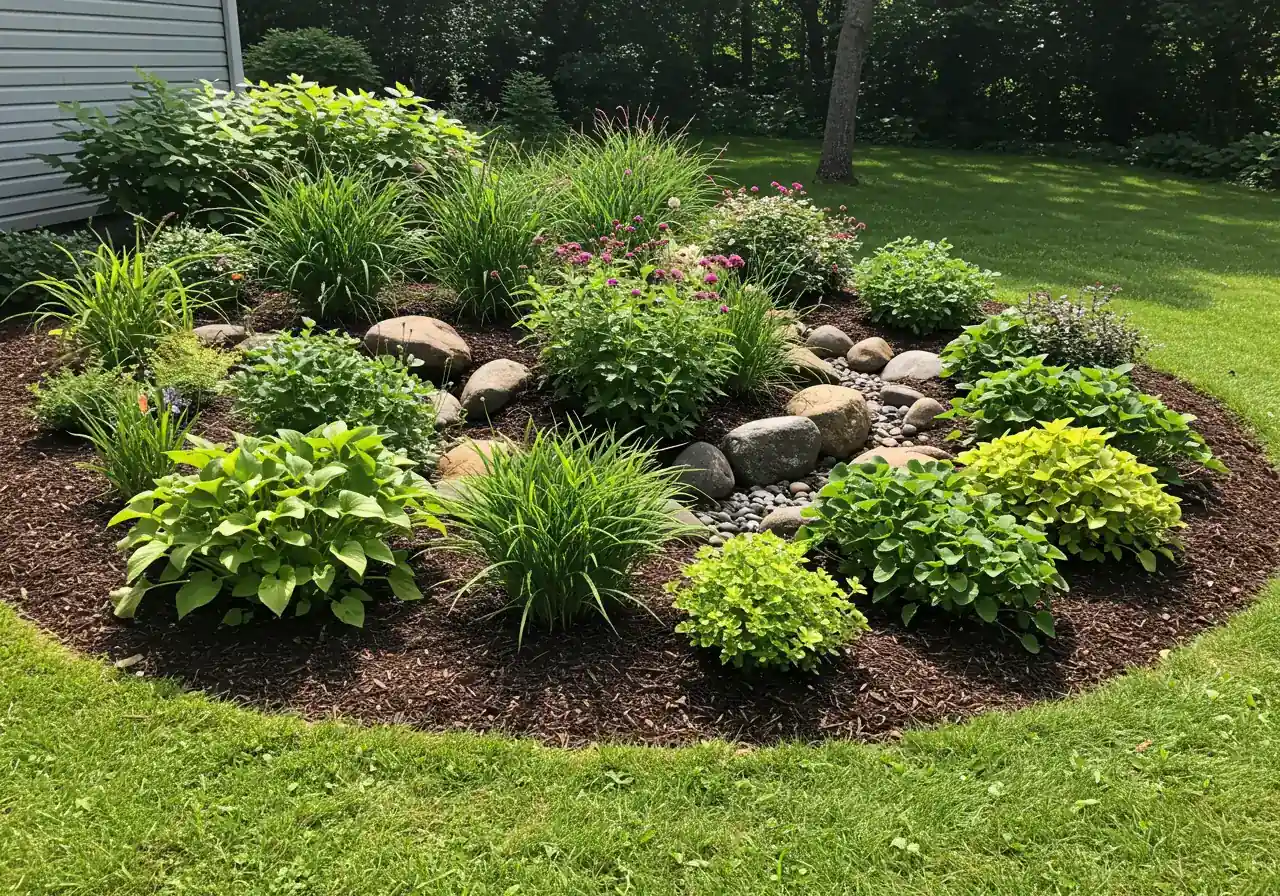
Okay, so we’ve established that getting the grade right is step one for sending water away from your foundation. High five for protecting your basement! But what if you want to go beyond just diverting water, and maybe even *use* that runoff in a smarter, prettier way? Instead of just sending water packing, let's talk about inviting it to stay a while (responsibly, of course!) using some eco-friendly drainage superstars. Think of these as the clever cousins to basic grading, especially useful in areas like Manotick, Russell, and Embrun where managing rainwater benefits everyone.
First up: Rain Gardens. These aren't your typical garden beds. Imagine a shallow, gently sloped depression in your yard, strategically placed to catch runoff from your roof or driveway. It’s filled with specific deep-rooted, water-loving plants and specially prepared soil that can handle getting soggy sometimes. Rain gardens act like natural sponges and filters. They collect rainwater, slow it down, filter out pollutants, and allow it to soak slowly into the ground, replenishing groundwater instead of rushing into storm sewers. Plus, they look fantastic and attract butterflies and birds! Ensuring proper soil preparation for a rain garden is key – you need that perfect mix for both drainage and plant health.
Next, meet the Bioswale. Think of it like a rain garden’s elongated cousin, often designed as a gentle channel lined with plants and sometimes rocks. Bioswales are great for guiding water across a larger area, slowing its flow, and promoting infiltration along the way. They can be beautifully integrated into your landscaping, maybe running alongside a driveway or property line. Keeping them looking sharp is easy, too; well-defined borders achieved through professional mulching and edging make them look intentional and attractive, not just like a ditch!
Finally, consider Permeable Pavers. Tired of puddles on the patio or driveway? Permeable pavers look like traditional paving stones but have small gaps between them, set on a special base layer. This allows rainwater to seep *through* the surface and into the ground below, drastically reducing surface runoff. It's a fantastic option for hardscaped areas, combining function and aesthetics.
Why bother with these? Well, besides looking great, these sustainable solutions reduce the amount of runoff leaving your property, which eases the burden on Ottawa's storm drains (especially during heavy rains!). They help filter pollutants, recharge groundwater, and can even reduce localized flooding. Less standing water also means less stress on your nearby lawn, complementing your regular expert lawn care efforts. Incorporating these features might even be part of a larger yard makeover, perhaps following a tidy-up by a Metcalf garden clean up service. Even simpler site preparations, like those handled by a Marionville property cleanup service, can set the stage for installing these smart drainage features.
Going beyond simple grading with these solutions turns potential water problems into beautiful, eco-friendly assets for your yard!
The Ideal Fall Grading Process Timeline
Step 1: Assessment & Planning (Late Summer/Early Fall)
Evaluate slopes, identify issues, check utilities. Book an estimate to get a professional plan.
Step 2: Site Preparation (Early-Mid Fall)
Clear the area, protect nearby plants. Often combined with fall property cleanup.
Step 3: Rough Grading (Mid Fall)
Move soil to establish the main slope away from the foundation using appropriate tools/machinery.
Step 4: Fine Grading & Compaction (Mid-Late Fall)
Refine the slope, ensure smooth transitions, and compact soil properly to prevent settling. Check soil readiness.
Step 5: Top Dressing & Finishing (Late Fall)
Add topsoil if needed, prep for dormant seeding or spring sod installation, final site cleanup.
Step 6: Enjoy Spring! (Next Spring)
Watch the snow melt and rain flow away from your home, knowing your foundation is protected!
Key Takeaways: Your Fall Grading Cheat Sheet
Okay, let's cut to the chase! Dealing with drainage can feel like a puzzle, but getting your grading right *before* winter is a game-changer for your home and yard. Think of this as your quick reference guide – the cheat sheet to conquer fall grading and dodge those springtime puddles.
Here are the must-knows:
- Protect Your Pad: The main goal of grading is simple: make sure water flows *away* from your house *foundation*. This prevents soggy basements, cracked walls, and saves you major headaches down the road. Positive slope is your best friend!
- Fall is Your Friend: Forget waiting till spring's muddy mess. Autumn in Ottawa and areas like Greely offers the *best* conditions for grading. The soil is usually drier and easier to shape, and your lawn and plants are winding down, meaning less stress on them.
- Aim for the Gentle Slope: You don't need a cliff! A subtle drop of about 6 inches over the first 10 feet away from your foundation is generally the sweet spot for effective drainage.
- DIY vs. Pro Decision: Tiny low spot? Maybe DIY. Anything significant, especially near your house? Professionals have the tools and know-how to get the slope *perfectly* right, avoiding costly mistakes. If you're weighing options or need an expert eye, feel free to Contact us to discuss your grading project. We take your privacy seriously when you reach out; you can see our data handling practices here.
- Bundle Your Fall Chores: Grading fits perfectly with other end-of-season tasks. Consider tackling it when you're already tidying up garden beds or booking an Ottawa yard cleanup service to get your entire property ready for winter hibernation efficiently.
- Think Beyond the Slope: Once your grade is right, consider enhancing your landscaping with rain gardens or bioswales for sustainable water management. Proper follow-up, like applying fresh mulch with clean lines using expert mulching and edging techniques in the spring, also keeps your graded areas healthy and looking sharp.
Manotick & Ottawa Grading FAQs: Your Questions Answered
Got questions about getting your yard's slope sorted? You're not alone! Many homeowners in Manotick, Greely, and across Ottawa wonder about the ins and outs of grading. We've gathered some common questions to help clear things up – think of it as your cheat sheet to a drier yard!
Usually, for basic re-sloping on your own property away from sensitive areas, you likely won't need a permit. Think of it like minor landscaping. However, if the grading is significant, changes drainage patterns affecting neighbours, involves building retaining walls over a certain height, or is near waterways or protected areas, you definitely should check with the City of Ottawa first. It's always better to be safe than sorry – nobody wants a surprise stop-work order! You can generally find information on property standards on the City's website.
Ah, the million-dollar question (well, hopefully not quite that much!). The cost really varies depending on a few things: the size of the area needing grading, how much we need to change the slope (a gentle nudge vs. major earth-moving), whether we need to bring in extra topsoil or haul excess away, and how easy it is for equipment to access your yard. Working with heavy clay soil, common around here, can sometimes add a bit more time too. Your best bet is to get a specific quote based on your property's unique needs. We assess everything upfront so there are no big surprises when you book an estimate.
We try our absolute best to be careful ninjas around your established landscaping! However, some disturbance to the immediate work area, especially the lawn, is usually unavoidable when reshaping the soil. We aim to minimize the impact on nearby plants and garden beds. Often, the graded area will need new grass seed or sod to look its best afterwards. Actually, fixing grading near your foundation can be a great opportunity to rethink those plantings – perhaps considering a fresh garden installation with plants suited for the new conditions. We always clean up thoroughly, leaving things tidy.
It really depends on the job's size and complexity! A straightforward fix on a small patch might only take part of a day. Larger projects involving significant soil movement or tricky access could take several days. Mother Nature also gets a vote – really wet weather can cause delays, especially with our Ottawa clay. We always aim to work efficiently and will give you a realistic timeline estimate upfront. You can find general information about scheduling and project agreements in our service terms and conditions.
You're right, that Ottawa Valley clay is no joke! It's heavy, doesn't drain quickly, and can be like concrete when dry or sticky goo when wet. We tackle it strategically. First, timing is key – working when it's not overly wet is crucial (another reason fall is great!). We use the right equipment to handle the weight and ensure proper compaction afterwards – you don't want it settling unevenly later. Sometimes, amending the top layer of soil can help improve surface drainage for planting. Proper site prep and cleanup are also vital with clay; ensuring all debris is removed is essential, similar to the thorough work you'd expect from specialized services like a Metcalf property cleanup service or a dedicated Marionville yard cleanup service, leaving your property ready for the next step, whether that's seeding or sodding. We know clay – we work with it every day!
Conclusion: Secure Your Home This Fall, Enjoy a Dry Spring!
Well, folks, we've journeyed through the whys and hows of fall grading, from understanding Ottawa's soggy spring potential to the nitty-gritty of shaping your soil. The bottom line? Don't let next spring turn your beautiful Manotick yard into a squishy surprise party for your foundation. Taking action *now*, before the ground freezes solid, is your golden ticket to a drier, less stressful thaw. Think of it as tucking your home in properly for the winter!
Proper drainage achieved through fall grading protects your home's structure, prevents basement moisture headaches, and sets your lawn and garden beds up for success when the plants start waking up. Ignoring a wonky slope is like inviting water problems over for tea – and trust us, they're messy guests!
So, what's next?
- Do a Quick Walkabout: Grab a mug of something warm and take a stroll around your house. Does the ground clearly slope *away* from your foundation on all sides? Even a quick visual check can sometimes spot obvious issues.
- Get an Expert Opinion: Not sure what you're looking at, or know you need help? Don't wait! The fall landscaping window is closing. Contact us for a professional grading assessment and quote.
We're proud to help homeowners secure their properties in Manotick, Greely, Barrhaven, Osgoode, Metcalfe, Nepean, Richmond and surrounding Ottawa communities like those needing Marionville property cleanup or Metcalf property cleanup. Let's get your grading sorted this fall, so you can look forward to a wonderfully dry spring!
